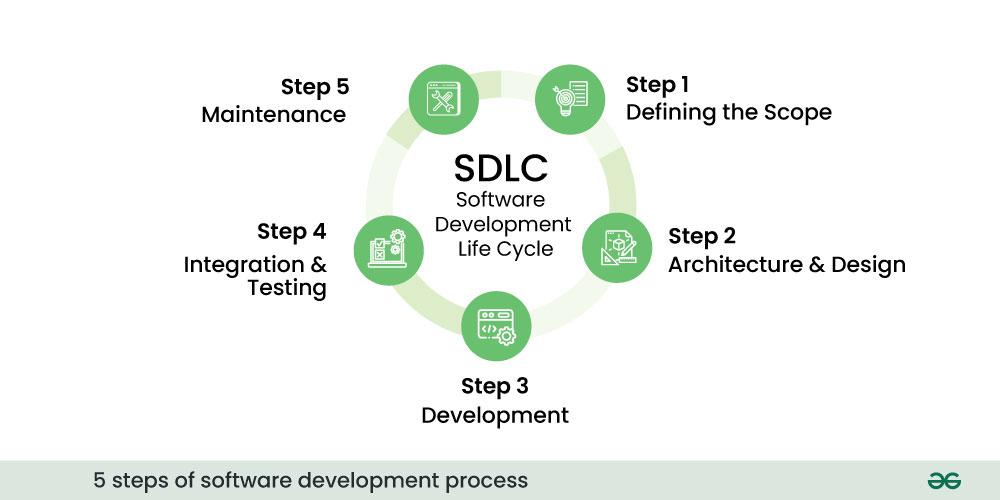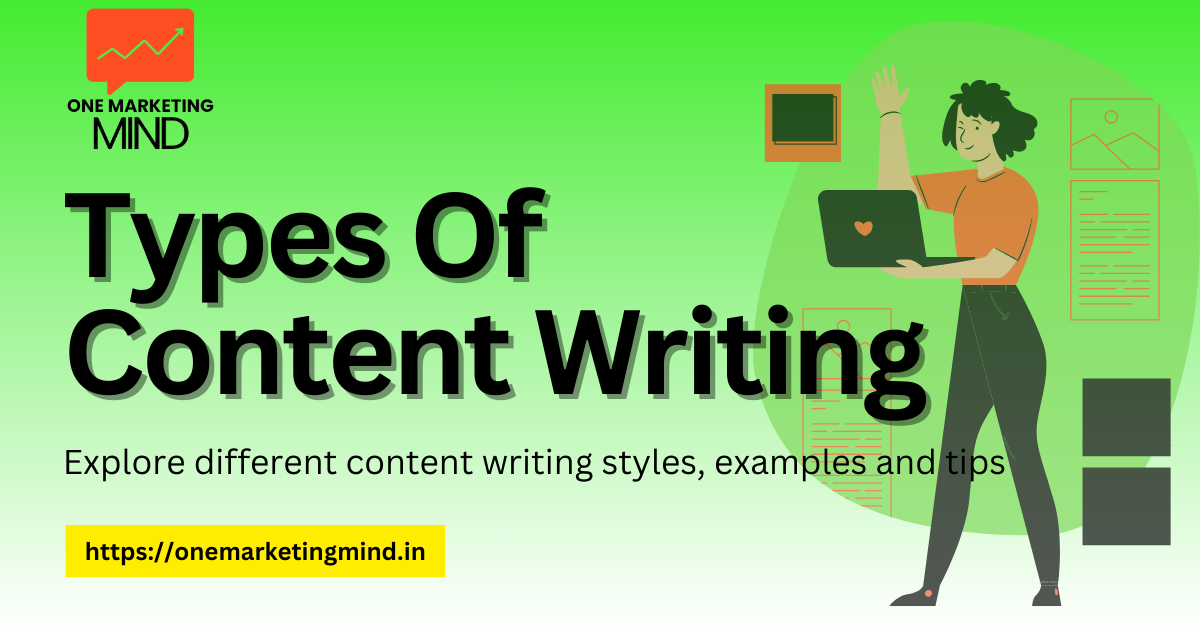Content writing is a cornerstone of successful marketing. Without it, your communication with your audience would suffer, leading to fewer leads and conversions. But with the myriad types of content available—ranging from Facebook posts to e-books and newsletters—understanding which ones to master can significantly boost your Google rankings.
In this blog, we’ll explore the content writing types and provide actionable strategies. Which will enhance your skills and achieve your marketing goals. Let’s dive into the 23 essential types of content writing and discover how each can drive meaningful results for your business.
Key Content Marketing Statistics
Explore the latest statistics on content marketing to understand which strategies deliver the strongest ROI and how the industry is evolving.
Industry Growth Projection:The content marketing industry is estimated to reach $600 billion in 2024.
ROI by Content Type:
- Websites, Blogs, SEO: 16%
- Social Media Shopping Tools (e.g., Instagram Shops): 16%
- Paid Social Media Content & Email Marketing: 14% each
- Content Marketing (various media): 14%
- Content Budget Allocation:Over 10% of marketing budgets are dedicated to content by most marketers.
- Organic Search Impact:51% of content interactions are driven by organic search.
- Content Strategy Adoption: 90% of marketers include content in their strategies.
Content Writing – Google Trends from last 10 years
Table of Content
What is content writing?
Content writing encompasses the art of crafting engaging and informative written material tailored for specific audiences and purposes. It serves as the backbone of digital communication strategies, encompassing various forms such as blogs, articles, social media posts, e-Books, and technical writing. Each type of content writing serves a unique function, from providing valuable insights and entertaining audiences to educating readers and promoting products or services.
By 2026, marketers anticipate that the revenue of the content marketing industry will surpass $135 billion
(Source –Aimultiple)
Top 23 Types Of Content Writing To Know In 2024
1. Blogs
Purpose: To Inform, Engage, and Inspire

Blogs serve as a powerful platform for sharing valuable insights, industry trends, and engaging stories. By consistently delivering high-quality blog content, businesses can establish themselves as thought leaders in their niche, attract organic traffic, and foster a loyal audience.
- Example: A blog post titled “Top 19 Digital Marketing Trends for 2024″
- Best Practices: Incorporate engaging visuals, use subheadings for easy scanning, and include actionable tips or insights.
- Recommended Tools: WordPress, Medium, Grammarly for proofreading.
2. Copywriting
Purpose: Crafting Compelling Messages for Conversions

Copywriting is the art of persuasion, used to compel readers to take action. From attention-grabbing headlines to persuasive product descriptions, effective copywriting can drive conversions and elevate brand messaging across various channels.
- Example: A product description emphasizing its unique features and benefits.
- Best Practices: Focus on persuading readers to take a specific action, such as making a purchase or signing up for a newsletter.
- Recommended Tools: Hemingway Editor, CoSchedule Headline Analyzer, A/B testing tools for copy.
3. Social Media Content Writing
Purpose: For Building Connections and Driving Engagement

In the age of social media, brands have the opportunity to connect with their audience on a personal level. By creating engaging content tailored to each platform’s unique audience and format, businesses can foster meaningful interactions, increase brand visibility, and drive engagement.
- Example: A series of tweets announcing a new marketing campaign.
- Best Practices: Keep posts concise, incorporate visuals, and encourage engagement through questions or polls.
- Recommended Tools: Buffer, Hootsuite, Canva for creating graphics.
4. Technical Content Writing
Purpose: For Simplifying Complex Concepts for Clarity

Technical writing plays a crucial role in communicating complex information in a clear and concise manner. From user manuals to instructional guides, technical writers help users navigate intricate processes and understand complex concepts with ease.
- Example: 5 steps software development process – Check example
- Best Practices: Use clear and concise language, provide step-by-step instructions, and include screenshots or diagrams where necessary.
- Recommended Tools: Adobe Framemaker, Microsoft Word, MadCap Flare.
5. SEO Content Writing
Purpose: Optimizing Content for Search Engines and Users
SEO writing involves creating content that not only ranks well on search engine results pages but also resonates with the target audience. By incorporating relevant keywords, optimizing meta tags, and crafting valuable content, businesses can improve their online visibility and attract organic traffic.
- Example: An article optimizing for the keyword “SEO Basics“
- Best Practices: Research keywords, incorporate them naturally throughout the content, and focus on providing valuable information.
- Recommended Tools: SEMrush, Ahrefs, Yoast SEO plugin for WordPress.
6. e-Books Content Writing
Purpose: Establishing Authority and Generating Leads

e-Books offer an opportunity to dive deep into a topic, providing valuable insights and actionable advice to readers. By offering e-Books as gated content, businesses can capture leads and establish themselves as trusted authorities in their industry.
- Example: An e-Book titled “The Ultimate Guide to Content Marketing.”
- Best Practices: Offer in-depth insights, break down complex topics into digestible chapters, and include multimedia elements.
- Recommended Tools: Designrr, Adobe InDesign, Scrivener.
7. Press Releases
Purpose: Sharing Newsworthy Updates and Announcements
Press releases are essential for disseminating newsworthy information to the media and the public. By crafting compelling press releases, businesses can generate buzz around product launches, company milestones, and other notable events.
- Example: A press release announcing a company’s partnership with a prominent influencer.
- Best Practices: Stick to the inverted pyramid structure, highlight the most important information first, and include quotes from key stakeholders.
- Recommended Tools: PR Newswire, Cision, Muck Rack.
8. Email Marketing Writing
Purpose: For Nurturing Leads and Driving Conversions
Email marketing remains one of the most effective channels for nurturing leads and converting prospects into customers. By delivering personalized and relevant content directly to subscribers’ inboxes, businesses can build relationships, drive sales, and foster customer loyalty.
- Example: A promotional email showcasing a limited-time offer.
- Best Practices: Personalize messages, segment your audience, and include a clear call-to-action.
- Recommended Tools: Mailchimp, Constant Contact, ConvertKit.
9. Newsletters Writing
Purpose: For Providing Valuable Updates and Insights
Newsletters offer a direct line of communication with subscribers, providing them with valuable updates, industry insights, and exclusive offers. By delivering relevant content on a regular basis, businesses can keep their audience engaged and informed.
- Example: A monthly newsletter featuring industry updates and company news.
- Best Practices: Curate relevant content, maintain a consistent schedule, and encourage interaction with your audience.
- Recommended Tools: Sendinblue, Campaign Monitor, Substack.
10. Screenwriting
Purpose: Crafting Compelling Narratives for Visual Media
Screenwriting involves creating scripts for film, television, and other visual media. By crafting compelling narratives, engaging dialogue, and memorable characters, screenwriters play a crucial role in bringing stories to life on the screen.
- Example: A script for a video advertisement promoting a new product launch.
- Best Practices: Follow standard screenplay format, focus on visual storytelling, and include compelling dialogue.
- Recommended Tools: Final Draft, Celtx, WriterDuet.
11. Creative Writing
Purpose: For Igniting Imagination and Emotion
Creative writing allows brands to tap into the power of storytelling to captivate audiences and evoke emotions. Through compelling narratives, vivid imagery, and authentic voices, businesses can forge deeper connections with their audience and differentiate themselves in a crowded marketplace.
- Example: A short story illustrating the importance of brand storytelling.
- Best Practices: Tap into emotions, use vivid imagery, and experiment with different narrative techniques.
- Recommended Tools: Scrivener, Google Docs, ProWritingAid.
12. Case Studies
Purpose: For Showcasing Success Stories and Solutions
Case studies provide tangible evidence of a brand’s value proposition by showcasing real-world success stories and solutions. By presenting challenges, strategies, and outcomes in a compelling narrative format, businesses can demonstrate their expertise, build trust, and attract potential customers.
- Example: A case study detailing how a client achieved significant ROI through your digital marketing services.
- Best Practices: Focus on real results and metrics, include quotes from satisfied clients, and present a clear problem-solution narrative.
- Recommended Tools: Case study templates, Google Analytics, Microsoft PowerPoint.
How are case studies used in content writing?
Case studies are real-life examples that demonstrate how a product or service has helped a customer solve a problem or achieve a specific goal, serving as valuable social proof for potential customers.
13. Editorial Writing
Purpose: For Providing Insightful Commentary and Analysis
Editorial writing offers a platform for brands to provide insightful commentary, analysis, and opinion on relevant industry topics and current events. By offering thought leadership and perspective, businesses can establish themselves as authoritative voices within their niche and shape the conversation in their favor.
- Example: An opinion piece discussing the future of influencer marketing.
- Best Practices: Offer unique insights or perspectives, back up arguments with data or examples, and maintain a balanced tone.
- Recommended Tools: Google Docs, WordPress, Grammarly.
14. Paper
Purpose: Exploring Complex Topics and Research Findings
Academic papers and research reports provide an opportunity for businesses to delve into complex topics, share groundbreaking findings, and contribute to industry knowledge. By presenting data-driven insights and actionable recommendations, businesses can position themselves as credible sources of information and thought leaders in their field.
- Example: An academic paper analyzing the effectiveness of social media advertising on consumer behavior.
- Best Practices: Follow the specified citation style (e.g., APA, MLA), structure your paper logically, and support your arguments with scholarly sources.
- Recommended Tools: Zotero, Mendeley, Microsoft Word.
What is the purpose of white papers in content marketing?
White papers are in-depth reports or guides that help educate readers about a complex issue, provide solutions to a problem, or showcase thought leadership in a particular industry
15. Ad and Sales Copy
Purpose: Persuading and Converting
Ad and sales copy are crafted with the primary objective of persuading and converting prospects into customers. From attention-grabbing headlines to compelling calls-to-action, effective ad and sales copy focuses on highlighting benefits, addressing pain points, and driving action.
- Example: A Facebook ad highlighting a limited-time discount on your product.
- Best Practices: Create a sense of urgency, emphasize benefits over features, and use compelling visuals.
- Recommended Tools: Google Ads, Facebook Ads Manager, Canva.
16. Product Content
Purpose: Informing and Persuading
Product content encompasses product descriptions, specifications, and features designed to inform and persuade potential buyers. By highlighting key benefits, addressing common objections, and providing detailed information, businesses can guide consumers through the purchasing journey and increase conversion rates.
- Example: A detailed description of a new product for your e-commerce website.
- Best Practices: Highlight key features and benefits, use persuasive language, and include high-quality images or videos.
- Recommended Tools: Shopify, WooCommerce, Magento.
How can product descriptions impact online sales?
Well-crafted product descriptions can influence purchasing decisions by providing detailed information about the features, benefits, and unique selling points of a product. Here is guide on how to write product description with example.
17. Articles
Purpose: For Educating and Entertaining
Articles serve as a versatile medium for educating, entertaining, and engaging audiences on a wide range of topics. By providing valuable insights, actionable advice, or entertaining stories, businesses can attract organic traffic, build brand awareness, and establish authority within their industry.
- Example: A thought leadership piece exploring the future of AI in digital marketing.
- Best Practices: Offer valuable insights or analysis, structure your article with a clear introduction, body, and conclusion, and cite reputable sources.
- Recommended Tools: Google Docs, Grammarly, Hemingway Editor.
18. Brand Journalism
Purpose: For Telling Compelling Brand Stories
Brand journalism involves using journalistic techniques to tell compelling stories that align with a brand’s values and mission. By focusing on authenticity, transparency, and storytelling, businesses can build stronger connections with their audience and foster brand loyalty.
- Example: A blog post featuring an interview with your company’s CEO discussing industry trends.
- Best Practices: Tell compelling stories about your brand or industry, incorporate multimedia elements, and maintain journalistic integrity.
- Recommended Tools: WordPress, Medium
19. Ghostwriting
Purpose: For Amplifying Voices and Expertise
Ghostwriting allows businesses to amplify their voices and expertise by enlisting professional writers to craft content on their behalf. Whether it’s thought leadership articles, blog posts, or speeches, ghostwriting enables brands to maintain a consistent voice and establish credibility in their industry.
- Example: A blog post published under a client’s name but written by a ghostwriter.
- Best Practices: Capture the client’s voice and style, maintain confidentiality, and deliver high-quality content on time.
- Recommended Tools: Upwork, Freelancer, Microsoft Word.
20. UX Writing
Purpose: For Enhancing User Experience Through Words
UX writing focuses on crafting clear, concise, and intuitive copy that enhances the user experience across digital interfaces. By guiding users through tasks, minimizing friction, and communicating effectively, businesses can improve usability, increase engagement, and drive conversions.
- Example: Microcopy within a mobile app guiding users through the registration process.
- Best Practices: Be concise and clear, use consistent terminology, and anticipate user questions or concerns.
- Recommended Tools: Figma, Sketch, Adobe XD.
21. Business Writing
Purpose: Clarity, Precision, and Professionalism
Business writing encompasses a wide range of documents, including emails, reports, proposals, and more. The hallmark of business writing is clarity, precision, and professionalism. By using straightforward language, organizing information logically, and adhering to industry conventions, businesses can communicate effectively with stakeholders, streamline processes, and mitigate misunderstandings.
- Example: A formal business proposal outlining a partnership opportunity.
- Best Practices: Use a professional tone, organize information logically, and tailor your writing to the intended audience.
- Recommended Tools: Microsoft Word, Google Docs, Grammarly Business.
22. Manuals
Purpose: For Empowering Users with Clear Instructions
Manuals serve as invaluable resources for guiding users through processes, procedures, and products. Whether it’s a user manual for a software application or an assembly guide for a product, the key to effective manual writing is clarity and usability.
By breaking down complex tasks into manageable steps, providing clear instructions, and incorporating visuals where necessary, businesses can empower users to make the most of their products and services.
- Example: A comprehensive user manual for a new piece of software.
- Best Practices: Organize information logically, include detailed instructions with screenshots or diagrams, and provide troubleshooting tips.
- Recommended Tools: Adobe InDesign, Microsoft Word, HelpNDoc.
23. Communication and Marketing Writing
Purpose: Engaging and Persuading Audiences
Communication and marketing writing encompass a wide range of content, including advertising copy, social media posts, press releases, and more. The goal of communication and marketing writing is to engage and persuade audiences, whether it’s attracting new customers, retaining existing ones, or shaping brand perception. By understanding audience demographics, crafting compelling messages, and leveraging persuasive techniques, businesses can effectively convey their value proposition, drive engagement, and ultimately, achieve their marketing objectives.
- Example: A company-wide email announcing changes to the marketing strategy.
- Best Practices: Be clear and concise, address the audience’s concerns or questions preemptively, and maintain a professional tone.
- Recommended Tools: Microsoft Outlook, Mailchimp, Grammarly.
What are the effective writing skills for a content writer?
A content writer requires a diverse set of skills to excel in their role. These include proficient writing ability, strong research skills, SEO knowledge, creativity, adaptability, and attention to detail.
| Skill | Description |
|---|---|
| Strong Writing | The ability to articulate ideas clearly, concisely, and effectively using appropriate grammar, style, and tone. |
| Research | Proficiency in gathering relevant information, data, and insights from various sources to support content creation. |
| SEO | Understanding of search engine optimization principles to optimize content for better visibility and ranking. |
| Creativity | Capacity to generate original and engaging content ideas, angles, and narratives that resonate with the target audience. |
| Adaptability | Flexibility to adjust writing style, tone, and approach to suit different audiences, brands, and content formats. |
| Attention to Detail | Commitment to maintaining accuracy, consistency, and quality in spelling, grammar, punctuation, and formatting. |
| Time Management | Ability to effectively manage time, prioritize tasks, and meet deadlines while juggling multiple projects or assignments. |
| Critical Thinking | Capability to analyze information, evaluate ideas, and develop compelling arguments or narratives based on insights. |
| Collaboration | Willingness to work collaboratively with editors, designers, and other team members to produce cohesive and impactful content. |
| Continuous Learning | Eagerness to stay updated on industry trends, best practices, and emerging technologies in content writing and marketing. |
How can I determine topics to write about?
To determine topics for writing, consider your target audience’s interests and pain points, industry trends, keyword research, and competitor analysis.
| Step | Description |
|---|---|
| Understand Your Audience | Identify your target audience’s interests, preferences, and pain points. |
| Conduct Keyword Research | Use tools like Google Keyword Planner or SEMrush to discover popular topics and search queries related to your niche. |
| Explore Industry Trends | Stay updated on industry news, developments, and emerging topics through industry publications, forums, and social media. |
| Analyze Competitors | Study your competitors’ content to identify gaps, trends, and popular topics within your niche. |
| Survey Your Audience | Collect feedback and insights directly from your audience through surveys, polls, or social media interactions. |
| Leverage Content Ideas Generator Tools | Use online tools like HubSpot’s Blog Ideas Generator or AnswerThePublic to generate topic ideas based on keywords or themes. |
| Brainstorm Ideas | Set aside dedicated time for brainstorming sessions with your team to generate creative content ideas and angles. |
| Address Frequently Asked Questions | Consider writing content that addresses common questions or concerns your audience may have. |
| Explore Evergreen Topics | Identify timeless topics or foundational concepts within your niche that continue to be relevant to your audience. |
| Consider Current Events | Look for timely opportunities to capitalize on current events, holidays, or trending topics that align with your brand’s values and messaging. |
| Seek Inspiration from Other Sources | Draw inspiration from diverse sources such as books, podcasts, TED talks, or industry conferences for fresh perspectives and ideas. |
| Experiment and Iterate | Don’t be afraid to experiment with different content formats, angles, or topics, and iterate based on performance and audience feedback. |
What are the steps to effective content writing?
Effective content writing involves planning, research, drafting, editing, and optimization for SEO and readability.
Crafting effective content involves several key steps to ensure clarity, engagement, and value for your audience. Here’s a structured approach to effective content writing:
1. Understand Your Audience
Begin by researching and understanding your target audience. Define their demographics, interests, pain points, and preferences. Tailor your content to address their needs and interests effectively.
2. Define Clear Objectives
Clearly define the purpose and goals of your content. Are you aiming to inform, persuade, entertain, or inspire? Establishing clear objectives will guide your writing process and help you stay focused on delivering the desired outcome.
3. Conduct Thorough Research
Before you start writing, gather relevant information and data to support your content. This may include conducting interviews, reviewing existing literature, or analyzing industry trends. Ensure that your content is well-informed and backed by credible sources.
4. Craft Compelling Headlines
Grab your audience’s attention with captivating headlines that clearly convey the value of your content. Use powerful language, evoke curiosity, and promise a benefit or solution to entice readers to engage further.
5. Create a Strong Introduction
Hook your audience from the start with a compelling introduction. Clearly state the purpose of your content, outline what readers can expect, and establish why it’s relevant or valuable to them. A strong introduction sets the tone for the rest of your content.
6. Organize Your Content
Structure your content in a logical and easy-to-follow manner. Use headings, subheadings, and bullet points to break up text and improve readability. Ensure a smooth flow of information, guiding readers from one point to the next seamlessly.
7. Focus on Clarity and Conciseness
Write with clarity and conciseness to effectively convey your message. Use simple language, avoid jargon or overly technical terms, and aim to communicate ideas in a straightforward manner. Keep sentences and paragraphs concise to maintain reader engagement.
8. Add Visual Elements
Incorporate relevant visuals such as images, infographics, or videos to complement your written content. Visuals not only enhance understanding but also make your content more visually appealing and shareable.
9. Inject Personality and Voice
Infuse your content with personality and a distinct voice that resonates with your audience. Whether it’s formal, conversational, or witty, your writing style should reflect your brand’s identity and connect with readers on a human level.
10. Edit and Proofread
Before publishing your content, thoroughly edit and proofread it to ensure accuracy, coherence, and polish. Check for grammatical errors, spelling mistakes, and inconsistencies in tone or style. Consider seeking feedback from peers or using editing tools to refine your content further.
11. Optimize for SEO (if applicable)
If your content will be published online, optimize it for search engines to improve its visibility and discoverability. Conduct keyword research, incorporate relevant keywords naturally throughout your content, and optimize meta tags and descriptions for better search engine ranking.
12. Encourage Engagement and Action
Finally, conclude your content with a strong call-to-action (CTA) that prompts readers to take the desired next step. Whether it’s subscribing to a newsletter, sharing the content on social media, or making a purchase, encourage engagement and conversion through clear and compelling CTAs.
Conclusion
In conclusion, mastering key writing styles is essential for achieving success in today’s competitive business landscape. Whether it’s crafting clear and professional business documents, empowering users with informative manuals, or engaging and persuading audiences through communication and marketing writing, the ability to communicate effectively is crucial.
By leveraging these content writing styles strategically, businesses can enhance their communication efforts, build stronger relationships with stakeholders, and ultimately, drive growth and success.
Frequently Asked Questions
How can I improve my content writing skills?
Practice regularly, seek feedback, and stay updated on industry trends and best practices to hone your writing craft across various content types.
How do I choose the right type of content writing for my needs?
Consider your goals, target audience, and message to determine which format—whether it’s informative blogs or engaging social media posts—best suits your objectives.
What is the purpose of blogs in content writing?
Blogs serve to inform, entertain, or engage audiences on specific topics, often used for sharing insights, opinions, or promoting products/services.
How many types of content writers are there?
There are several types of content writers, each specializing in different areas. These include SEO content writers, copywriters, technical writers, content strategists, social media content writers, creative writers, and editorial writers. Each type brings unique skills and expertise to the table, catering to specific content needs and goals.
How can businesses leverage different types of content writing for their marketing strategies
By incorporating a mix of content types such as blog posts, articles, social media content, videos, and infographics, businesses can reach and engage diverse audiences across various platforms.
What are some key elements of effective content writing?
Effective content writing should be well-researched, tailored to the target audience, engaging, informative, and optimized for search engines to drive organic traffic.
How is website content different from other types of content writing?
Website content is specifically tailored to convey information about a business, its products or services, and its brand in a way that is engaging and informative for visitors to the site.

